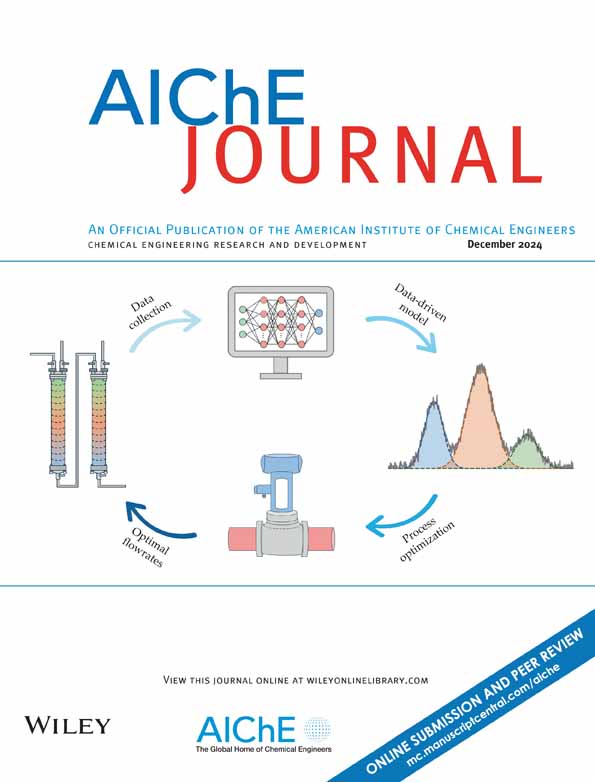表面工程钙钛矿氧化物,使晶格和吸附氧的CO氧化双重活化
IF 4
3区 工程技术
Q2 ENGINEERING, CHEMICAL
引用次数: 0
摘要
使用钙钛矿氧化物催化氧化是一种很有前途的技术,可以减轻与CO排放相关的环境和健康风险。然而,钙钛矿氧化物的一个基本限制在于氧的低温反应性有限。虽然晶格氧(Olatt)和吸附氧(Oads)的双重活化被认为是一种有效的策略,但在钙钛矿氧化物中实现它仍然是一个重大的挑战。本研究通过采用稀氯化钛溶液处理的新型表面工程策略解决了这一挑战。La0.6Sr0.4CoO3 (LSCO)的处理过程同时实现了两个不同的功能:(i)去除表面a位隔离,暴露Co-site终止,从而促进Oads活化;(ii)掺入Ti掺杂剂,增强Co - O共价,提高Olatt反应活性。这种协同的双重活化机制使LSCO-Ti催化剂能够同时通过Mars-van Krevelen (olat介导)和Langmuir-Hinshelwood (oads介导)途径工作,从而在92°C的低温下实现90%的CO转化活性。此外,Ti掺杂剂还可以优化O2吸附,抑制碳酸盐积聚,确保在150℃下保持50小时以上的稳定性能。我们的工作为通过协同表面改性设计高性能钙钛矿催化剂提供了一个新的机制框架。本文章由计算机程序翻译,如有差异,请以英文原文为准。
Surface-engineered perovskite oxides enabling dual activation of lattice and adsorbed oxygen for CO oxidation
Catalytic oxidation using perovskite oxides is a promising technology for mitigating environmental and health risks associated with CO emissions. A fundamental constraint for perovskite oxides, however, lies in the limited low-temperature reactivity of oxygen species. While the dual activation of lattice oxygen (Olatt) and adsorbed oxygen (Oads) is recognized as an effective strategy, achieving it in perovskite oxides remains a significant and underexplored challenge. This study addresses this challenge through a novel surface engineering strategy employing dilute TiCl4 solution treatment. The treatment process on La0.6Sr0.4CoO3 (LSCO) simultaneously achieves two distinct functions: (i) the removal of surface A-site segregation to expose Co-site termination, thereby facilitating Oads activation; (ii) the incorporation of Ti dopant, which enhances the CoO covalency to boost Olatt reactivity. This concerted dual activation mechanism enables the LSCO-Ti catalyst to operate via both Mars–van Krevelen (Olatt-mediated) and Langmuir–Hinshelwood (Oads-mediated) pathways, leading to its exceptional activity of 90% CO conversion at a remarkably low temperature of 92°C. Furthermore, the Ti dopant also optimizes O2 adsorption and suppresses carbonate accumulation, ensuring stable performance for over 50 h at 150°C. Our work provides a novel mechanistic framework for designing high-performance perovskite catalysts via synergistic surface modification.
求助全文
通过发布文献求助,成功后即可免费获取论文全文。
去求助
来源期刊

AIChE Journal
工程技术-工程:化工
CiteScore
7.10
自引率
10.80%
发文量
411
审稿时长
3.6 months
期刊介绍:
The AIChE Journal is the premier research monthly in chemical engineering and related fields. This peer-reviewed and broad-based journal reports on the most important and latest technological advances in core areas of chemical engineering as well as in other relevant engineering disciplines. To keep abreast with the progressive outlook of the profession, the Journal has been expanding the scope of its editorial contents to include such fast developing areas as biotechnology, electrochemical engineering, and environmental engineering.
The AIChE Journal is indeed the global communications vehicle for the world-renowned researchers to exchange top-notch research findings with one another. Subscribing to the AIChE Journal is like having immediate access to nine topical journals in the field.
Articles are categorized according to the following topical areas:
Biomolecular Engineering, Bioengineering, Biochemicals, Biofuels, and Food
Inorganic Materials: Synthesis and Processing
Particle Technology and Fluidization
Process Systems Engineering
Reaction Engineering, Kinetics and Catalysis
Separations: Materials, Devices and Processes
Soft Materials: Synthesis, Processing and Products
Thermodynamics and Molecular-Scale Phenomena
Transport Phenomena and Fluid Mechanics.
 求助内容:
求助内容: 应助结果提醒方式:
应助结果提醒方式:


